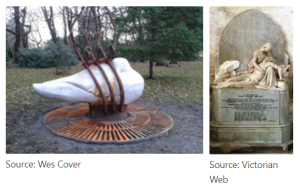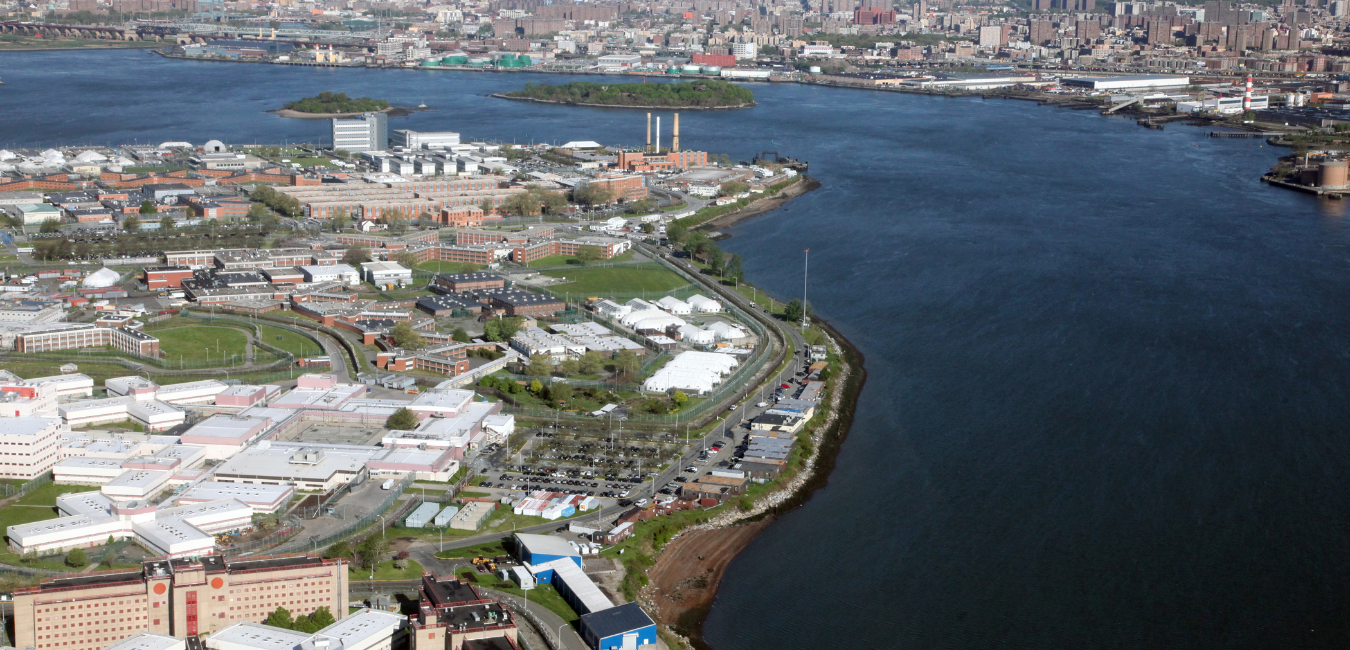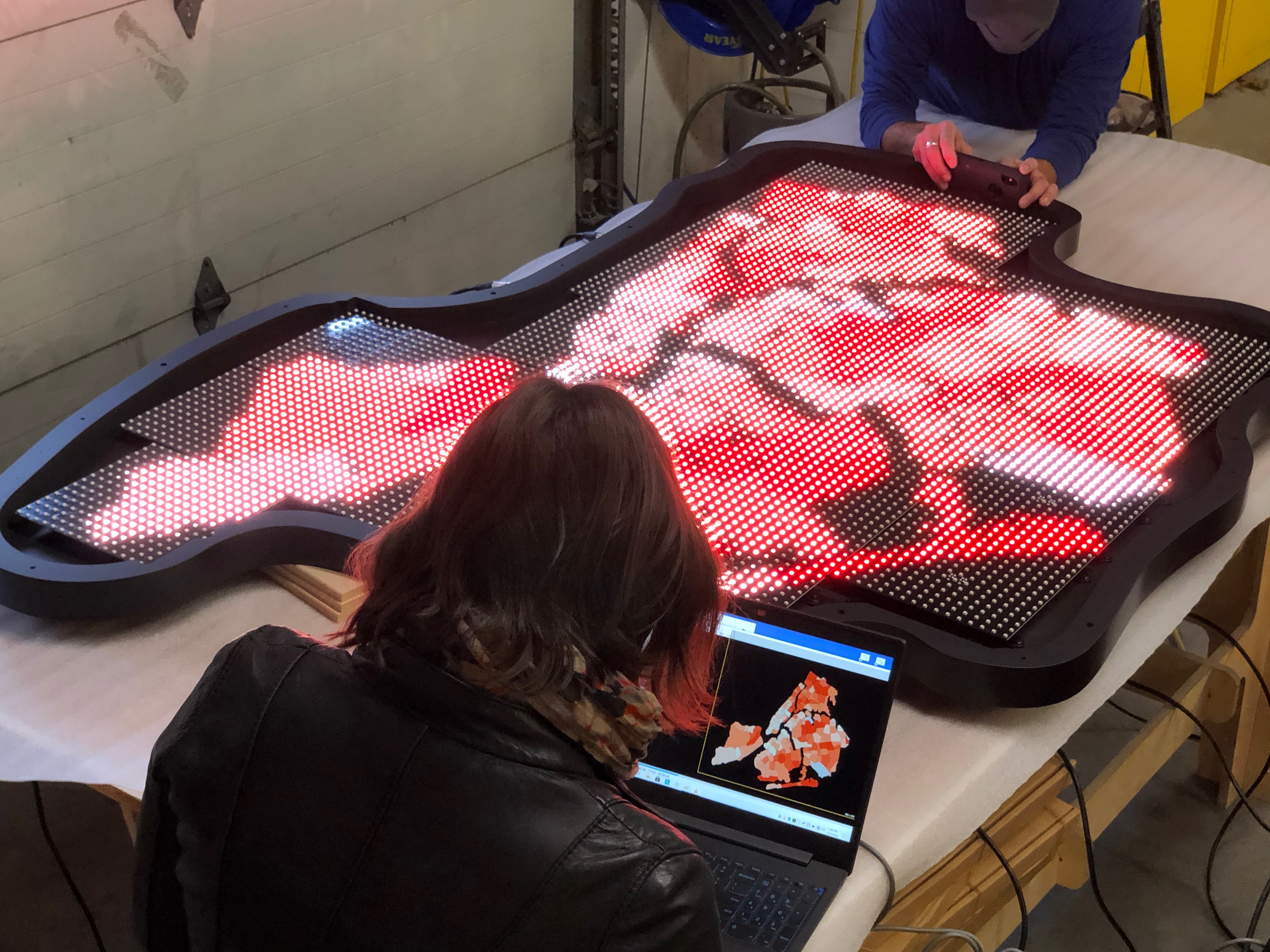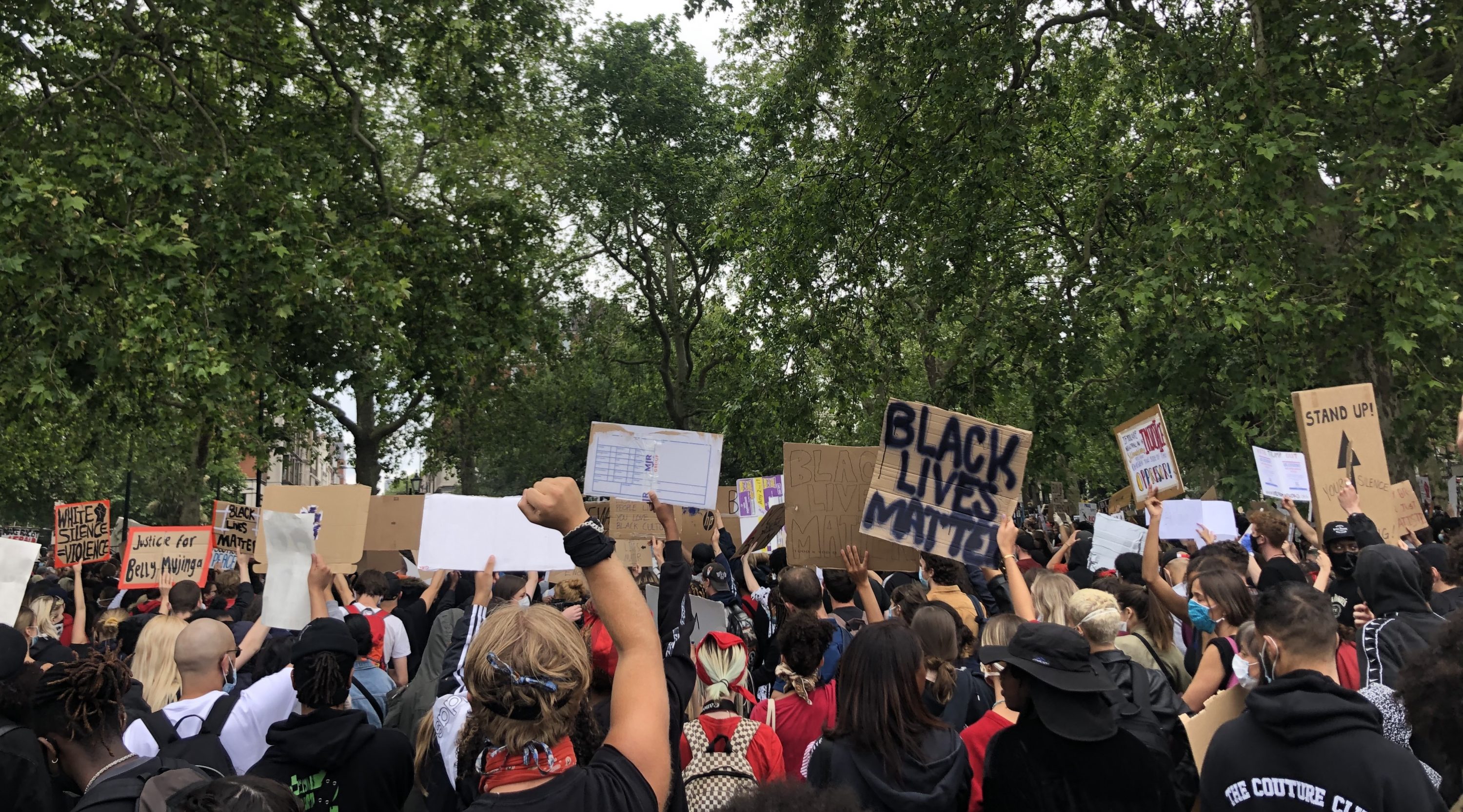In the wake of controversy surrounding public statues and colonial figures in the UK, the unveiling of Maggi Hambling’s “Sculpture for Mary Wollstonecraft” seemed to be, for many, a moment of resistance. A call to “breaking the Bronze Ceiling” that is keeping women under-represented or grossly misrepresented in civic monuments across the country.
Not only this, Hambling envisioned the figure to represent a universal and modern “everywoman” that people could get behind. Financed primarily by crowdfunding and various donations from the People’s Postcode Trust and Henry Moore Foundation, the sculpture has been 10 years in the making, since the “Mary on the Green” campaign launched in 2010, accumulating support from public figures and parliamentarians alike. According to the campaigners and benefactors, Mary Wollstonecraft’s legacy as an educational pioneer and advocate for women’s legal and political rights in Enlightenment Britain landed her the tribute on Newington Green, erected in early November, 2020. Crucially, in the words of the “Mary on the Green” artist Maggi Hambling, the sculpture is not a depiction of Mary Wollstonecraft herself. Instead, the female figure was meant to memorialise Wollstonecraft and her fight for female emancipation.
But why was the construction of the “everywoman” considered a moment of resistance? When we begin to question who occupies public space, or more specifically, who is granted the right to be seen and validated in public space, it becomes clear that urban planning and design is not a neutral process. As Lindiwe Rennert writes in “Black Women in Planning: Where are We?”, the absence of women, particularly black, brown, disabled and minoritized groups in urban planning and design manifests in inequitable and inaccessible built environments. Women have been consciously or unconsciously excluded from public space because their needs are not met by the way these spaces are conceived, which is visible, for example, in the inadequate provision of street lighting that would make spaces feel safer for women, trans and non-binary people, the transnational lack of access to public sanitation facilities for marginalised genders and the prevalence of narrow sidewalks or crowded environments on public transport that fail to cater to those with wheelchairs, prams and pushchairs.
The geography of women’s fear in public urban space seems to coincide with those places that are dominated by men. Women are likely to negotiate public space alone and make sense of it via mental maps informed by statistical knowledge about sexual harassment, for example, and subjective perceptions of male violence within empty railway carriages, alleways and carparks. Women and marginalised genders tend to avoid bus services at night due to feeling unsafe, but in many cases of night-shift and part-time work, this becomes unavoidable. Studies also found that young girls retreat from shared spaces, particularly playgrounds due to a lack of comfortable sheltered places. Also, women who work in an increasingly racialised and feminised unregulated low-waged service sector in urban regions are unlikely to have an affordable and safe means of accessing the city. London’s transport system was initially designed to meet the needs of men who could easily access the city via expanded underground routes for work during rush hour commutes, thereby restricting the mobility of albeit white and affluent women to what was considered safe, idyllic and domestic Suburbia, premised on the “neighbourhood principle” and nuclear family. Single parents, multi-generational families, unmarried women and migrants who may not have access to legal means of securing housing are often socially and financially alienated from the UK’s suburban housing system, but living within the city, are exposed to crowded and hostile spaces that also restrict their mobility.

All these mechanisms work in concert to control women’s exposure to public spaces and therefore their right to exist safely within and around the city. Ultimately, the unmet needs of women and marginalized genders in the built environment means that they only get to exist in the peripheries. Given the fact that the organising principle in urban cities is so closely linked to gender bias, reclaiming public space and demanding visibility can be a form of political resistance. From renaming street names in Vienna to constructing secure, permanent mini-vendor markets for women that include space for breastfeeding in Kigali, communities have resisted gendered organising principles in urban cities. “Reclaiming urban public space, means reclaiming it in every sense, reclaiming the right to walk, to stroll, to loaf, to sit alone, to hang out with others, to wander, to get lost, to be visible, to be invisible, to use a toilet, to just be, in all those spaces, at all hours.” writes Ira Sanyal in her blog post for Medium.
The significance of public monuments in this movement to reclaim space is generally contested, particularly since the pandemic, as public expressions of art have become one of the only ways of experiencing artwork in a non-digital space and arguably more intensely analysed. Some say statues teach us about history, others say they teach us to be critical of history. I think it’s fair to say public monuments hold normative significance to society, representing the values we should seek to uphold or symbolising the lessons we should learn from history. Such values serve as markers of collective identity. What does it say about our society if the figures we put on pedestals are morally corrupt? Statues also immortalise the memory and legacy of the figure it represents. The spaces they occupy matter. The collective toppling of colonial figure and slavetrader Edward Colston, which stood for centuries in Bristol’s city centre, generated a sense of optimism across communities in the UK, as its physical removal and submersion into the very harbour used during the slave trade challenged the grounds on which it was erected and permitted to stand so proudly at the heart of the city.

Whilst the “everywoman” sculpture was widely anticipated by many and seems to serve as a tangible means of promoting Mary Wollstonecraft’s contribution to ‘equality, diversity and human rights’, it has also come under public scrutiny for a number of reasons. The general gist of the criticism that hovered on social media following the unveiling was outrage surrounding the female figure’s nudity, who most mistook for Mary Wollstonecraft herself. Even so, some argued that the naked female figure failed to embody what Wollstonecraft “stood for.” According to the critics, the focus of the otherwise monumental installation was shifted to the figure’s naked form, in a city where numerous named male counterparts “get to be clothed because the focus is on their work and achievements.” Some contrasted Hambling’s work to Martin Jennings’, the shortlisted contender. In the latter, Wollstonecraft is seen cast in bronze holding a toppling pile of books in balance by her fingertips, alongside a quote from Wollstonecraft’s pamphlet “A Vindication of the Rights of Women.” The outrage does not seem misplaced when contextualising the gendered pattern of civic monuments across the UK. For example, in 2016, Caroline Criado-Perez found that a mere 2.7% of the UK’s statues are of historical, non-royal women. In Manchester’s Trafford Centre there stand 100 nude allegorical female statues in comparison to one nude male statue. Interestingly, a nude memorial depicting Mary Wollstonecraft’s son-in-law and one of the major English Romantic poets, Percy Bysshe Shelley and his death by drowning, lies at University College, Oxford. But the issue at hand is larger than simply pursuing an equal distribution of nude male and female figures.
Historical women, whose life’s work and legacy contributed to the public good in some way, are celebrated simply as archetypes, symbols and muses in public space. Without this agency, these figures become anonymous and their tributes trivialised. The statue of Wollstonecraft’s daughter Mary Shelley, esteemed author of the well-studied novel Frankenstein, is seen in Christchurch Priory, Dorset beside the body of her husband Percy Bysshe Shelley, mourning his death. Her presence is simply a means to memorialise the death of her husband, as opposed to her contributions to society. In Bournemouth, another tribute to Mary Shelley stands in the form of a dove caught in a ‘gothic-inspired’ cage. Though carefully thought out by local school children, the statue is a critical example of the use of symbols to represent women in the public space. Geographers have drawn attention to the significance of monuments in creating a public sense of memory, one in which women’s memories are entirely erased in this way. The fact that historical women are routinely memorialised in the abstract speaks to the implicit and explicit forms of gender bias within urban planning. In this context, for many, although the sculpture reclaims public space in a sense, the relevance of the sculpture’s nudity seems limited and ahistorical, given that funding could have been redirected to urban feminist interventions that could better and perhaps more tangibly “rewrite justice”: the very words used by Bee Rowlatt, chair of Mary on the Green to describe the act of erecting the sculpture for Mary Wollstonecraft. Perhaps more significantly, the sculpture appeared to pander to the male gaze. The spirit of Wollstonecraft’s work, centred on legal rights as opposed to radical body politics and sexuality, reduced to a ‘perfectly formed wet dream of a woman.’ A “negative image that “encourages sexual harassment,” says Dr Julia Long.
In this context, for many, although the sculpture reclaims public space in a sense, the relevance of the sculpture’s nudity seems limited and ahistorical, given that funding could have been redirected to urban feminist interventions that could better and perhaps more tangibly “rewrite justice”: the very words used by Bee Rowlatt, chair of Mary on the Green to describe the act of erecting the sculpture for Mary Wollstonecraft. Perhaps more significantly, the sculpture appeared to pander to the male gaze. The spirit of Wollstonecraft’s work, centred on legal rights as opposed to radical body politics and sexuality, reduced to a ‘perfectly formed wet dream of a woman.’ A “negative image that “encourages sexual harassment,” says Dr Julia Long.
However, it seems problematic assumptions regarding the female body are buried in-between valid criticism. Women’s bodies, even in the abstract and in urban architecture, have long been a contested and political battleground for feminist debate. Are the nude “everywoman” and resistance uniquely incompatible? The assumption is that a woman cannot simultaneously engage in nudity and demand respect or emancipation. In real life, we see this line of reasoning everywhere in literature and popular media, with prominent female figures being branded “anti-feminist” for ‘confusing nudity with liberation.’ But are female nudity and liberation mutually exclusive? Women’s bodies are sexualised regardless and have therefore also been deemed a site for political resistance. Critically, however, nudity should not be mistaken for consent: a dangerous assumption that might be induced from Dr Long’s claim about sexual harassment. Maggi Hambling also defended her work by revealing her intentions to portray an ahistorical tribute: one that isn’t to be constrained by any sort of clothing that represents a particular moment in history. “Put someone in period dress and they become part of history. I didn’t want to do that to her…the figure had to be nude because clothes define people” says Hambling. In this way, context becomes significant when statues are erected by and for women, but this begs a question that critics do not seem to be asking: Which women does this sculpture actually represent?
“As far as I know, she’s more or less the shape we’d all like to be,” says Hambling: a statement that did not seem to get much attention in the wave of online criticism. The female form appears to display a white, slim and crucially normative figure that Hambling titles the “everywoman.” It seems as if Hambling sets a counterproductive and impossible standard of universality and colour-blindness. Critics have also failed to interrogate the claim that establishes Wollstonecraft as the ‘foremother of British feminism.’ The feminism that Wollstonecraft promoted, as well as the suffragette and suffragist movement that followed, was a very specific type of feminism, namely first-wave “Western” liberal feminism established in the 19th century, which adhered to a set of beliefs about the centrality of the individual and the locus of female emancipation that lies within political and legal reform. However, our history books have conveniently overlooked liberal feminism’s neglect of disenfranchised groups and non-white feminist pioneers of the UK, not to mention the accommodation of “white and bourgeois feminism” and racial prejudice.
“Educated in slavish dependence, and enervated by luxury and sloth, where shall we find men who will stand forth to assert the rights of man;–or claim the privilege of moral beings, who should have but one road to excellence?” – A Vindication of the Rights of Woman, Mary Wollstonecraft (1792).
Written during the slave trade, Wollstonecraft alludes to the lack of reason and virtue that informs slaves’ moral corruption and complicity in their own enslavement, yet white women, depicted as slaves to Britain’s legal, financial, social and education system which was dominated and favoured by men, were granted innocence in their claim to freedom. As Ruhi Khan writes, white feminist treatises campagined for women’s legal rights by equating the lives of white women belonging to nobility and gentry with those led by slaves. The narratives of inhumane conditions experienced by slaves were appropriated by white women, with their proximity necessary for white bourgeois women to demand freedom and safety. In the United States, the implementation of the 15th Amendment in 1870, which granted black men the right to vote, exacerbated racial resentment within the suffragist movement. Well-known women’s suffragist and president of the Woman’s Christian Temperance Union Frances Willard routinely engaged in racial stereotypes to gain support from white women in the South, whilst antagonising early civil rights leader Ida B Wells in her transnational campaign against the lynching of black people. Are these the ideals we want to immortalise?
“It is not fair that a plantation Negro who can neither read or write should be entrusted with the ballot.” – Frances E Willard
Some have argued that in criticising such art forms and allowing ‘political ideology to win the tug of war with an artist’s creativity’, we fail to challenge ourselves and the traditional beliefs we hold. The “Mary on the Green” Group has publicly stated that “just as the image of Churchill’s memorial statue is used in debates on his legacy, the same is needed for Mary Wollstonecraft”, which bears an uncomfortable resemblance to the “retain and explain” policy that British institutions have aggressively fought to defend. This policy was officially justified a couple of months after the toppling of Edward Colston in 2020 and supposedly encouraged the public to tackle “difficult” and “morally complex” histories of such figures by keeping them in place, visible on their physical pedestals in public space. Morally complex is an interesting way of categorising Churchill’s contribution to the Bengali famine or Colston’s involvement in slave trading, not to mention the countless racist statues that are still standing across the country. Although Wollstonecraft’s legacy is different to Churchill’s or Colston’s and made significant contributions to the public good, similar justifications have been made for the erection of these three statues to avoid interrogation of certain claims.
Statues should not be sites of moral debate. We cannot allow morally questionable ideals to occupy and be validated in public space. Practically, given the funding and labour that is directed into the construction of these monuments, do we need to erect morally questionable figures or even figures who upheld time-specific normative values in order to have these conversations?
With historically monumental black figures such as Mary Seacole and Henrietta Lacks only being celebrated in bronze in 2016 and 2021 respectively, approaches to breaking the Bronze Ceiling haved failed to be intersectional. The concept of intersectionality, developed by Kimberlé Crenshaw in 1981, recognises the different axes of oppression that constitute our experiences. The non-white woman’s experience is not some additive combination of white feminist thought and male anti-racist thought, but rather a more complex, historically specific manifestation of different social categories. One social category is not necessarily more important or fundamental than the rest in determining social power relations but each has to be examined alongside the others: sexism, racism, ableism, fatphobia, homophobia, transphobia and ageism all come into play and each has to be examined alongside the others. Identities are experienced differently in relation to different spaces of our everyday lives. For example, the social category of race may be particularly salient for a student of colour in predominantly white academia. In the case of public statues, the same can be said for the prevalence and defence of white male and female figures in comparison to the erasure of their non-white counterparts.
Some positive developments are being made, but are they moving towards redressing past injustices? The 12 year campaign for Mary Seacole’s memorial statue in Lambeth, depicting the Jamaica-born nurse who cared for wounded British soldiers during the Crimean War in the 19th Century was considered a seminal yet long awaited moment for the UK. Interestingly, there exist meaningful ahistorical sculptures such as The Bronze Woman, based on the poem of the same name by Cécile Nobrega, which stands in Stockwell’s Memorial Gardens depicting an Afro-Carribean Women holding her child. The bronze figure was erected to celebrate black motherhood, which echoes the themes of the poem: “‘find me a place/ in the sun’ and ‘there I will set her/ honoured, free.” Also, Bristol University’s Campus is soon to see a public sculpture of Henrietta Lacks, whose DNA, named “HeLa cells”, were used to study cancerous cells and gene mapping, create the polio vaccine and develop IVF treatment. The Dean of the faculty of Life Sciences claims that the unveiling will “coincide with the start of the university’s work on the decolonisation of the curriculum which will include an acknowledgement of the invaluable contributions black people have made to science over the years.”
Some elements, however, question the progress being made towards a more just representation of women and minorities in the public space and the involvement of these same groups in designing public space. Firstly, echoing Lindiwe Rennert’s words, where are the black and non-white women in urban design? Secondly, the process is not particularly democratic at certain stages. The communities that these monuments are meant to represent and memorialise are not being consulted, which was visible in Theresa May’s dismissal of the Carribean community prior to the announcement and development of a national Windrush Monument at Waterloo Station for 2022, in honour of the Windrush generation, who arrived from Commonwealth countries in the Carribean to Britain and were invited to live as British citizens.
Thirdly, there seems to be a tendency to romanticise a fantasy of the past that absolves political actors of responsibility in adequately reckoning with past injustices. The unveiling of the Henrietta Lacks sculpture was framed as a step towards addressing Bristol’s past, but the two bear very little correlation. Further, Lacks’ DNA was initially shared without her or her family’s consent. A failure to acknowledge her legacy and story is not an adequate step towards redressing injustice. Following the cumulative outrage regarding the state of racial injustice in the UK, the image of non-white figures in physical proximity to white figures and white-dominated spaces have been instrumental in creating the illusion that institutional racism does not exist. Celebrating figures solely via civic monuments allows political actors to praise them from a safe and palatable distance, which also runs the risk of fossilising their resistance. Following the announcement of the national Windrush Monument, proposed by the Ministry of Housing, Communities & Local Government and the Windrush Commemoration Committee (WCC), which was set up by Theresa May in 2018, many members of the Windrush generation are still being detained, deported and threatened with deportation, with logistical barriers to deportation being eased in 2014 by then-Home Secretary Theresa May. At least 21 people have died while waiting for Windrush compensation claims to be paid and many have been wrongly and unlawfully classified as illegal citizens without receiving compensation or tailored mental health support. Here again, action and representation are in adequation, as if the setting of a monument could erase years of mistreatment. There is also certain danger in individualising the resistance that certain figures embody, without acknowledging the role of the state in sustaining systemic racism and sexism. For example, the unveiling of women’s suffrage campaigner Millicent Fawcett at Parliament Square was praised by May, who said she “would not be here today, none of us would have had the rights and protections we now enjoy were it not for one truly great woman.” In this context, sculptures appear as part of a well orchestrated communication strategy rather than a remembrance exercise. Notably, the UK government has also recently introduced sanctions for the damage of public memorials, arguably in response to the protests against statues commemorating colonial figures. Given the demographic of protestors and targeted memorials, this does not seem coincidental.
Ultimately, the Bronze Ceiling is far more complex than it is made out to be. With the construction of civic monuments a commonplace practice in the UK, it is fair to question the imbalanced distribution of statues across the country. However, this cannot be the end goal. It is important to recognise the significance of being seen and validated in public space, but it is vital to remain critical of the ways in which civic monuments are developed and erected, as well as question the purpose they serve in society. In the case of the everywoman, whilst it is certainly a ‘source of debate’, perhaps it is not the ‘visual celebration of inclusion, diversity’ and equality it was hoped to be. It remains an ambiguous and questionable symbol of empowerment that has allowed to spur important conversations when art, culture and representation are often seen as non essential and apolitical.





